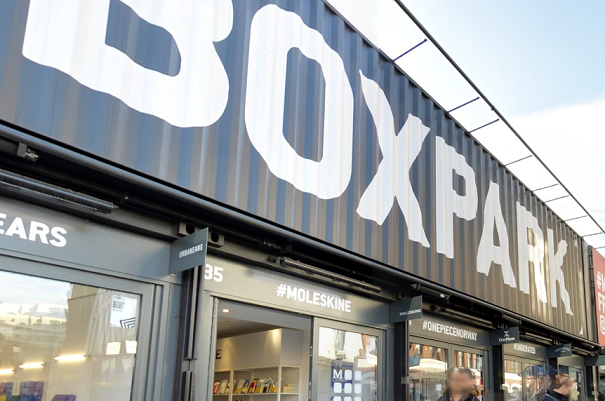
We all know about hipster fallout, whether that’s a favourite pub closing in favour of a craft brewery; a much loved market become a haven for street food enthusiasts, or on a more serious level, rents being pushed up and the original local residents of a now fashionable area feeling alienated. But can gentrification ever be a force for good as well?
Alex Proud’s article on “Shoreditchification” published by the Daily Telegraph last January, struck such a chord with me that I was moved to investigate further.
Proud argued strongly against skinny jeans and hipster beards and their appropriation of various previously underdeveloped parts of London.
First it was Shoreditch he said, then Dalston, now Peckham and with their sights set on the likes of Streatham, Walthamstow and Tottenham. The journey is always the same,he continued, these young urban creatives move in, appropriate the area as if their own, cluttering it up with their own brand of cultural ephemera, from pop-up burger joints to speakeasies selling cocktails from jam jars and their own craft beer.
The problem, according to Proud, is the obsession with the next big thing. The new entrants have no qualms about upping sticks and moving elsewhere, leaving in their wake a litany of designer label clad out of towners clogging up what was the local pubs. Cheap entertainment aside, any area that has been Shoreditchified risks rising rents and original residents being alienated from the area they grew up in.
I set out to discover if gentrification can be a positive thing. If you’re part of the team in Croydon behind pushing the area as the next tech hub, the answer is a resounding “yes”.
Last year, the area boasted the second fastest growth of existing tech clusters in the capital behind Hackney.
“It’s probably the best placed of the emerging tech/media hubs to succeed,” said Matthew McMillan, Croydon Council’s lead investment executive, who eloquently put the case for gentrification in a talk on gentrification I organised at the Clerkenwell Design Festival.
“This is due to the borough’s outstanding London-wide and international travel connections, the wider £3billion regeneration programme which will transform the city centre environment, and the commitment from the council to provide the right office accommodation, digital infrastructure and skills provision to enable tech to thrive.”
One of the sure signs of gentrification is arrival of a Boxpark, the pop-up retail hub that has worked so well in (surprise, surprise) Shoreditch, where repurposed shipping containers housed brands such as Nike and Puma as well as many other small, creative businesses from jewellery and accessories to business cards.
Boxpark will operate on an initial three year lease next to East Croydon station, as part of the £1billion Ruskin Square development. This redevelopment of the area adjoining the station, which had been derelict for decades, includes the building of 161 homes in the first phase. This includes sale, shared ownership and rental properties.
Jo Negrini, Croydon Council’s acting executive director for place has said, “The fact is we’re very well located both for Gatwick and central London, relatively cheap compared with the rest of London and have a burgeoning tech sector in the centre. We’ve got the capacity, we’ve got the sites, we’ve got everything. We are now moving from the planning stages, getting the foundations right – our strategies, masterplans and profile – into a period over the next 12 months that’s very much about delivery.”
There’s obviously a balance to be struck between hipster-bashing and seeing incoming techies and the trappings of hipsterville that inevitably come with them as a singularly positive thing. An interesting example to look at is the work of Clear Village, which is a London-based charity that helps communities through what it describes as ‘creative regeneration’.
Clear Village’s home is in Limewharf, a cultural innovation hub and art space on Vyner Street, East London. This placemaking venture, the brainchild of Clear Village founder Thomas Ermacora, is located near the Regent’s Canal.
Its position means it not only has a strong geographical connection with the nearby waterway but also a vested interest in the community living on, and along it. With this in mind, Clear Village set about focussing on improving the lives of live-aboard boaters through a diverse range of initiatives. After gathering stories and opinions from the boaters on the canal, it addressed some of their key concerns. In terms of their safety worries, it handed out 800 whistles and community watch notices. It also created a Canal Danger Map and started a crowd funding campaign for better lighting near Victoria Park.
A Neighbourhood Planning Initiative explored establishing local forums to tackle mooring and resource issues - the number of live-aboard boaters has increased by 70 per cent in the past four years by way of demonstrating the scale of the challenge. There was also a desire to increase the influence in local development planning.
Another project that Clear Village was involved with managed to help the Friends of Down Lane Park (FDLP) group secure £200,000 of regeneration funds to make six alleyways in Tottenham safer. The scheme was called Alley Links and was the only London-based project included in the Design Council/CABE’s “Design Your Neighbourhood” programme. In addition to providing grant funding, the programme linked FDLP to Clear Village as a local design partner who could provide the necessary (participatory) design expertise to drive the project forward.
Clear Village’s Frank Van Hasselt talks earnestly about the charity’s mission to identify community challenges, build on existing community assets and involve community members through participatory design. And not a pop up burger outlet or craft beer company in sight.